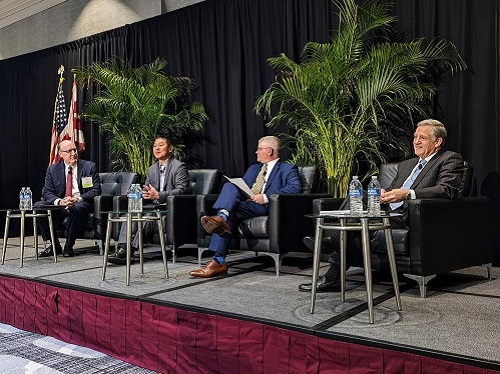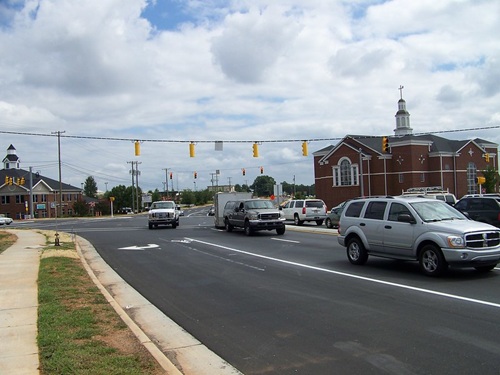To improve upon efforts to deliver a resilient and multimodal transportation system that is safe, sound, and smart, state departments of transportation are increasingly looking to work with “non-traditional partners,” such as energy utilities and social service organizations.
[Above photo by AASHTO]
Yet doing so successfully will require “creative thinking” and the use of “innovative financial supports,” according to a knowledge session held during the American Association of State Highway and Transportation Officials 2023 Washington Briefing, held February 28 through March 3 in Washington, D.C.

“Fostering new and emerging partnerships is a critical part of what state DOTs will need to do in the 21st century in terms of supporting the nation’s transportation system,” stressed the moderator, John Barton, senior vice president of infrastructure consulting firm HNTB, which sponsored the session.
“This is a new mindset,” he explained. “As we evolve into multimodal DOTs, we need to have an open mind with businesses, local communities, utility companies, and others to allow for new and emerging thoughts to influence our transportation systems. That persistence in creating open and positive relationships with communities, many that maybe have been disenfranchised in the past, allows us to learn, listen, and absorb new perspectives, which then helps us deliver new and innovative mobility options. That process also includes leveraging one another’s resources, be it finances or intellectual capital.”

Robin Shishido, deputy director-highways division for the Hawaii Department of Transportation, noted that his agency is now looking at ways to use infrastructure projects to support everything from affordable housing to local farms.
“We are engaging with local farmers to ensure we can maintain the food supply chain through a crisis, be it a hurricane, volcanic eruption, etc.,” he said. “That means handling cold storage needs, for example, and ensuring our harbors can handle more produce, more food containers, and the shipping to move it.”
Other Hawaii DOT partnerships are focused on how to establish charging infrastructure to support broader use of electric vehicles as well as beefing up broadband deployment in rural areas of the island chain, which would also help the agency improve its traffic data transmission capacity – data that helps identify areas where speeding, for example, is a persistent problem.

Michael Lynn, executive director of the department of transportation and infrastructure for the Cherokee Nation, emphasized that more integrated partnerships with state DOTs enables his agency to help his nation’s citizens get where they want to go safely.
“There are currently 39 recognized native tribes in Oklahoma and a majority of our roads adjoin to the state highway system,” he explained. “A more integrated partnership gives us access to federal and state funds we might not otherwise have. Also, by establishing common goals, we can work better together to solve them.”

Russell Laughlin, executive vice president of strategic development and innovation with Texas-based Hillwood – a multinational industrial, commercial and residential real estate division of the Perot Company – added that such “integrated partnerships” should include the private sector as well.
“TxDOT [the Texas Department of Transportation] is embedded in everything we do,” he said. “That partnership helps us think about connectivity not just for our projects today but 35 years down the road. Our job as a developer is to find an opportunity and then a pathway to that opportunity. That’s why we partner closely with TxDOT and others.”
 Top Stories
Top Stories


